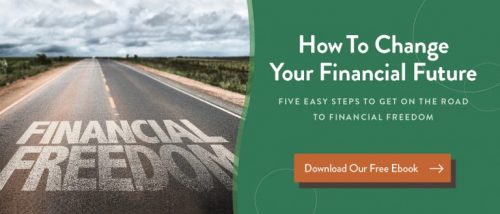
It’s Time for Investors to Put Assets On the Sidelines Back to Work
Navigating market volatility can be challenging, especially when retirement keeps getting closer daily. After the recent bout of economic uncertainty, many in the Generation X demographic have pulled their savings out of the stock market and now face a conundrum: what’s next as the market seems to be recovering?
As an experienced Greeneville TN financial advisor that has weathered numerous economic storms, recessions, and market peaks and valleys, one of the main questions that I am asked regularly is:
“Isn’t it risky to return my money to the market while it fluctuates?”
In this article, I’ll share my thoughts on that question and provide additional insights you can use to understand your current circumstances and move forward confidently with a retirement savings strategy you are comfortable with.
Before we dive into the specifics, it’s essential to understand two important principles. First, no one rings a bell at the top or bottom of markets, so they are impossible to predict accurately. Second, it is more important to get into the market than to try to time the market.
The foundations for the second principle are based on the following:
- Markets go up more than they go down
- You can’t participate if you aren’t invested in them
Market volatility is a natural part of the financial world. Economies and earnings outlooks are constantly fluctuating. On the plus side, uncertain times may be when you find the best investment opportunities (prices may be lower).
Read our popular Quick Guide for Investors: “The Gen X Guide to Retirement Planning.”
Timing, as they say, is everything.
Remember the adage, “The best time to invest was yesterday. The next best time is now.”!
Why now? Out of fear or uncertainty, most people will wait until the markets fully recover before reinvesting their cash (money market, CDs, T-Bills). This strategy is akin to buying a ticket for a Broadway show but waiting until the curtain call to take your seat. You miss all the exciting scenes and only catch the tail-end of the performance.
That’s the problem with waiting too long to reinvest. The markets have a long history of moving in short spurts, and delays may cause you to miss all or part of the recovery. When you finally decide to get back in, you will have missed out on securities selling for lower prices just a few weeks or months ago.
This is the equivalent of buying high and selling low when your timing is off even a little. This is different than the scenario any Gen Xer wants to experience when they plan their financial future, including retirees’ focus on a different approach, which sounds like timing, but not in the way you may think it works.
Getting back into the stock market when it starts to recover can be important for several reasons:
- As the stock market recovers, companies undervalued during the downturn may start to see significant growth during the recovery. By entering the market when prices are lower, you can take advantage of these opportunities before the prices return to previous highs.
- What if the dividends on some stocks are higher than the interest rates on some cash equivalents? The lower the stock price, the higher the dividend.
- Regularly investing a fixed amount each month can buy more shares when prices are lower and fewer when prices are higher. This strategy can result in a lower average cost per share over time, potentially leading to higher returns in the future. This investment strategy is known as dollar-cost averaging.
- Over the long term, the stock market has historically trended upwards. However, that is not a straight line. There are always dips and downturns when conditions negatively impact companies’ earnings. But, in the end, the stocks of quality companies usually produce positive rates of return.
Go It Alone or Work With an Experienced CFP®?
Managing investments yourself or hiring a CERTIFIED FINANCIAL PLANNER ™ (CFP ®) depends on several factors. Ask yourself these questions:
- Do I know enough about investing, markets, and finance?
- Do I have time to monitor and manage my investments?
- Do I have the skills to handle complex financial situations like estate planning, tax planning, retirement planning, etc.)?
- Do I have the investment discipline to withstand the emotional roller-coaster ride of the markets?
Are any of the answers to these questions a cause for concern? If there are any, you should consider partnering with a CERTIFIED FINANCIAL PLANNER™ who can guide you through all of the stages of reentering the securities markets and assist you with the ongoing monitoring of your finances.
Thoughts from a CERTIFIED FINANCIAL PLANNER (™) in Greeneville, TN
As a Greeneville financial advisor for Gen X, I understand the unique challenges and opportunities that impact the retirement plans of millions of people. With the right advice and mindset, you can turn a bear market into a golden opportunity for investing at lower prices.
- First and foremost, I’d emphasize, “Don’t give up and roll CDs.” The key to successful investing is discipline, especially in a bear market. It’s important not to panic and sell off your investments due to short-term market fluctuations. Stick to your investment plan, and remember that quitting is a formula for future problems. Your portfolio has generated real rates of return after the impact of inflation.
- I also advise minimizing or suspending withdrawals in down markets to preserve and enhance your portfolio’s potential for reinvesting income and proceeds from sales. Staying the course enables your portfolio to recover faster when the markets eventually rebound.
- To leverage a bear market to the fullest, I recommend temporarily increasing your 401(k) contributions. You can purchase more shares for the same amount due to lower securities prices. For 2023, the maximum amount an employee can contribute to their 401(k) is $22,500. Additionally, the combined limit for contributions from the employee and employer is $66,000. Individuals who are 50 years old or above can save an extra $7,500 in catch-up contributions, which increases their personal contribution ceiling to $30,000.
- Another focus should be the need for a financial plan. If you don’t have one, it’s time to create it. And if you have one, it’s time to update it, considering the current market conditions and your financial goals and tolerance for risk.
- Inflation is currently higher than normal. As a result, keeping money in cash, CDs, bonds, and fixed annuities can lead to a loss in future purchasing power. It’s advisable to maintain a cash reserve that covers your cost of living for six months and invest the rest in assets with the potential for appreciation.
- Because interest rates continue to rise, existing bond prices will continue declining. We recommend minimizing fixed-income investments and paying off as much variable-rate debt as possible. As interest rates climb, so does the cost of variable-rate debt, which can put a serious dent in your financial plan.
- As a crypto and digital asset-friendly advisor, I believe in diversifying your investment portfolio to include these newer asset classes, especially for GEN Xers who might be more tech-savvy.
Sapiat Asset Management is a fee-only Registered Investment Advisor. This means we are legally required always to provide advice in our client’s best interests.
Remember, it’s not about timing the market—it’s about time in the market. Let’s develop a well-thought-out plan and return your money to work today! Let’s begin the next phase of your Gen X financial planning journey together. if you’re looking for an advisor who can help navigate these challenging financial times, we’d appreciate the opportunity to speak with you about your needs, goals, and aspirations.

